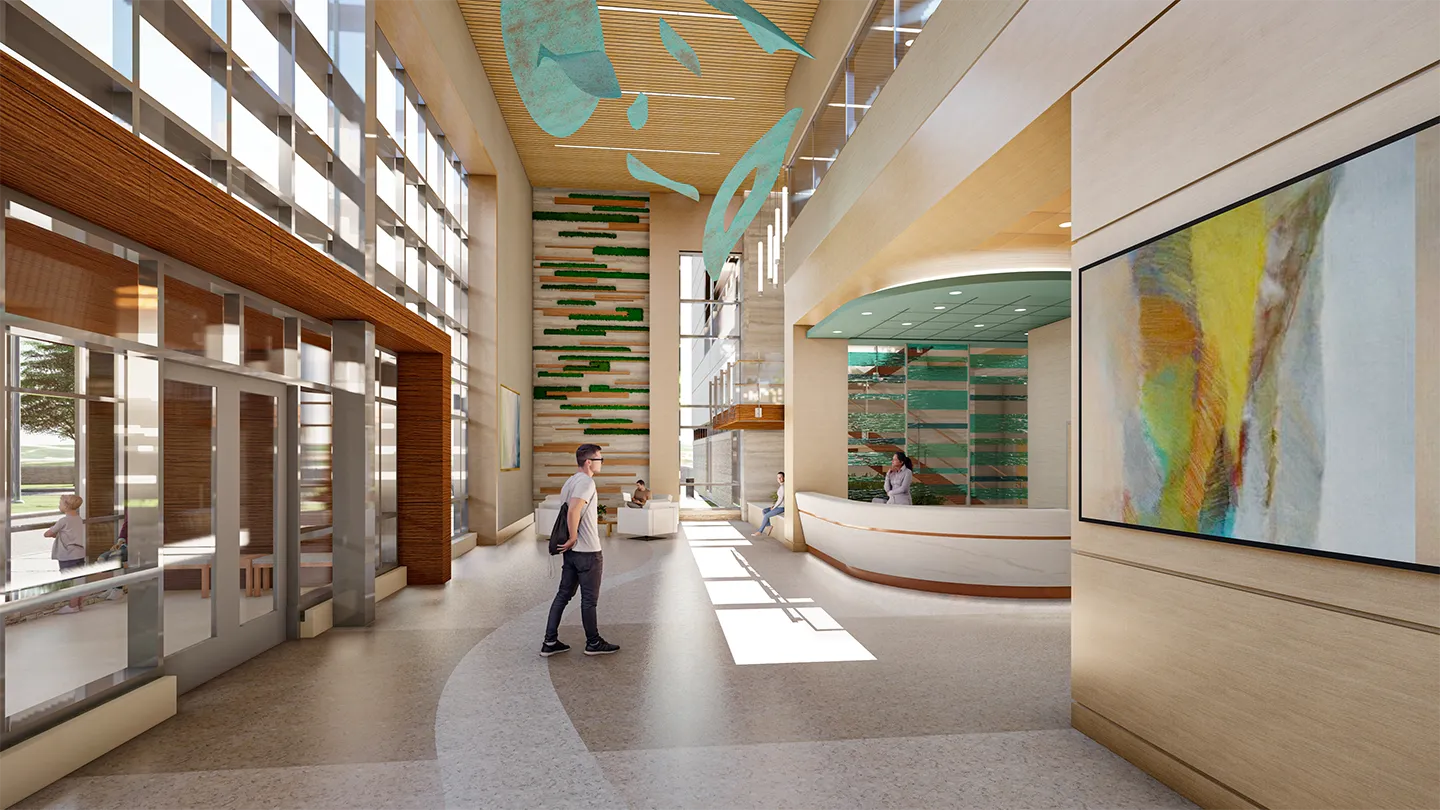Collaborative virtual reality, or VR, has become an important tool in architectural design. Unlike the single-person experiences standard VR typically provides, collaborative VR allows multiple people to work together in a realistic 3D environment. These experiences can drive real results in terms of communication and design. Recently, we’ve been using collaborative VR in the design of different project types, including specialized psychiatric care facilities.
 The Oklahoma Psychiatric Care Center staff used the VR technology to assess their own sightlines and workflows in the facility’s proposed dayrooms and patient spaces.
The Oklahoma Psychiatric Care Center staff used the VR technology to assess their own sightlines and workflows in the facility’s proposed dayrooms and patient spaces.
Hospital staff used the technology to assess how patients can be observed no matter where or how they have positioned themselves, which helped us design the best possible conditions for patient care.”Josh Becnel
Using the technology puts designers and mental health facility stakeholders closer to the real experience of a space, creating new opportunities for better, more practical designs that 2D or even 3D renderings alone cannot accomplish. With these technologies, designers can give a guided tour of a virtual space to, for example, eight people simultaneously. Meanwhile, anyone without a VR headset can watch a projection of the experience in a conference room. This extends the shared experience to participants who benefit from the real-time interactivity of their peers.
We recently deployed this multi-user VR technology for the new $88-million Oklahoma Psychiatric Care Center located in Tulsa. Hospital staff used the technology to assess their own sightlines and workflows in the facility’s proposed dayrooms and patient spaces. This allowed staff to completely assess how patients can be observed no matter where or how they have positioned themselves within the space. This kind of insight is helping us design the best possible conditions for patient care and healthcare operations, and support better outcomes for all users of the facility.
Contributing to Better Outcomes in Psychiatric Care Facilities
VR technology helps advance the goals of practitioners and improve the experiences of their patients. Designers and facility stakeholders can visualize equipment clearance issues, optimize spaces shared by facility visitors and staff, and determine how tall or wide staff stations should be in ways that are practically impossible without the use of VR. Healthcare practitioners can realize professional benefits using VR. They can interact with the digital space and understand how it will flow as they work with their colleagues and patients. Designers can gather otherwise overlooked insights by watching them sit, stand, and move around the space.
The Future of VR in Mental Health Facility Design
I anticipate that before too long, many clients, including those in the mental healthcare space, will begin to expect VR as a way to visualize spaces throughout their proposed facility during early stages of design. It’s key that designers be adaptable to these developments, including possibilities for better project understanding and schematic designs.